- Home
- slideshows
- miscellaneous
- Drone photos of Mumbai reveal the places where extreme poverty meets extreme wealth
Drone photos of Mumbai reveal the places where extreme poverty meets extreme wealth
The top 1% of India's population holds nearly three quarters of the nation's wealth.

The Dharavi slum consists mostly of grey, concrete structures.
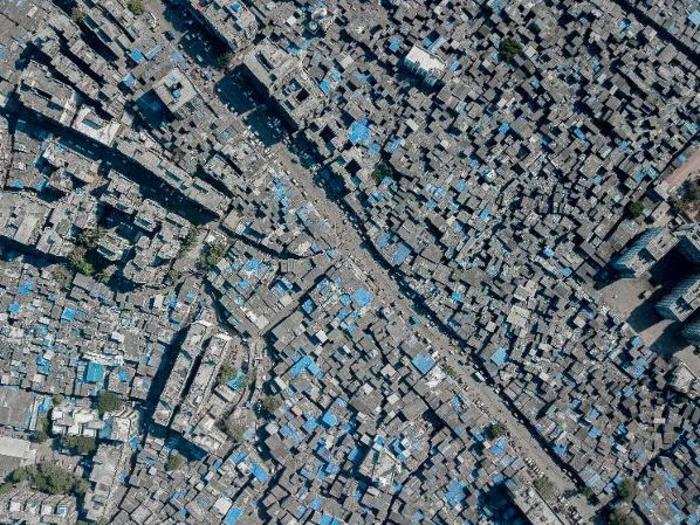
Many of its inhabitants are second-generation migrants who have lived there for decades. Dharavi homes also function as work spaces for the city's artisans, including potters, tanners, weavers, and soap makers, whose offices are located underneath living spaces and bedrooms.
Residents of Dharavi cover their roofs in blue tarps to protect their homes from monsoons.
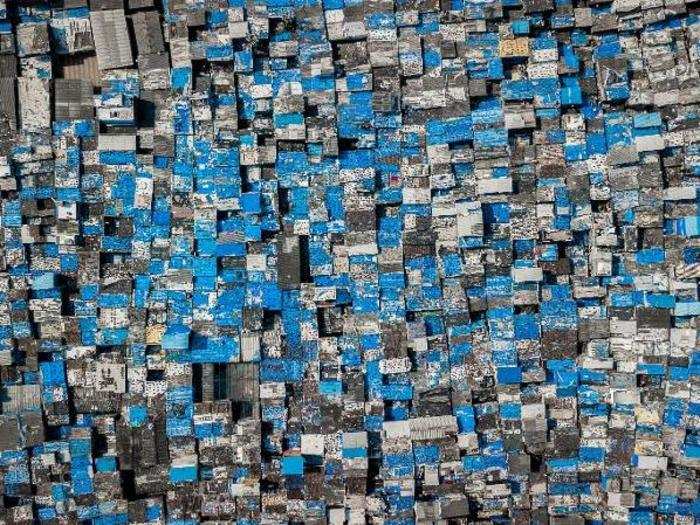
India's monsoon season lasts from early summer to late fall. Extreme weather has made the nation vulnerable to floods and landslides, resulting in a death toll of around 200 people this year alone. In Mumbai, thousands of people were stranded and transit services were suspended due to heavy rains.
The former fishing village is characterized by dirty, narrow alleyways and open sewers — but not all conditions are bad.
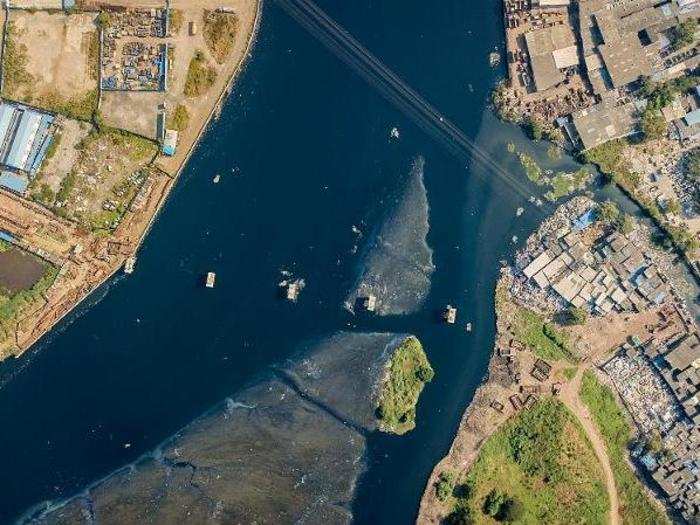
Dharavi has seen a decrease in violent crime since the 1980s, and its proximity to the airport and subway lines has spurred a host of new development.
The slum's small businesses help feed a burgeoning economy, one that produces around $1 billion a year.
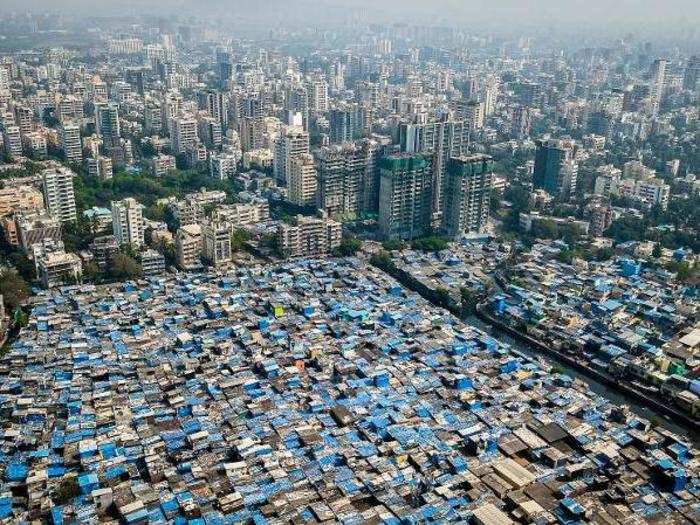
In addition to artisan workers, Dharavi benefits from a massive recycling industry. As the setting of the popular film Slumdog Millionaire, it also attracts a number of tourists — though many have questioned the ethics of the area's "slum tours."
The slum runs up against the Maharashtra Nature Park, a green oasis amid a sea of concrete.
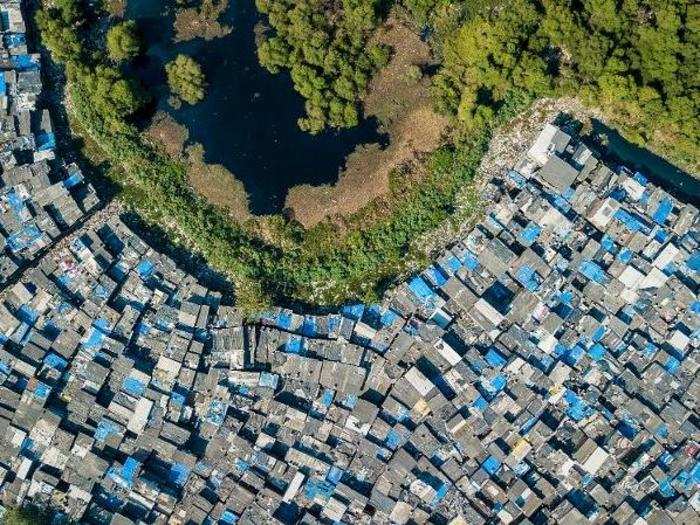
The park was made possible thanks to a joint project between the Mumbai government and World Wildlife Fund.
The site was once a garbage dump. Now, it contains 14,000 trees and 300 varieties of plant species.
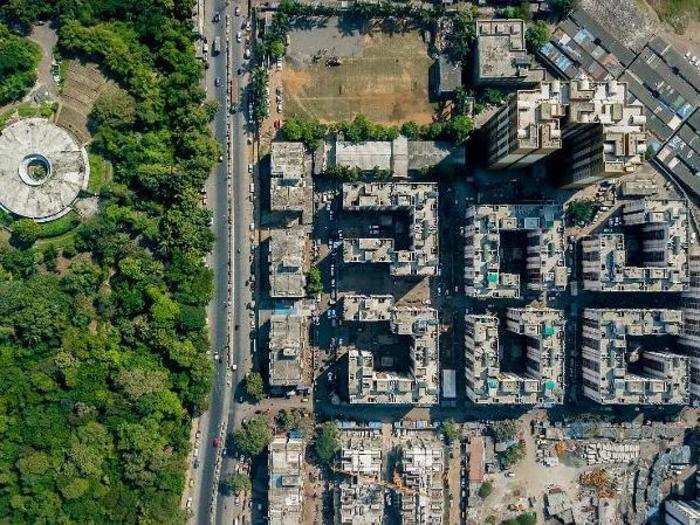
Entrance to the park costs less than a cup of tea, or around 14 cents, according to Miller.
Across the river is one of the city's wealthiest business districts, the Bandra Kurla.
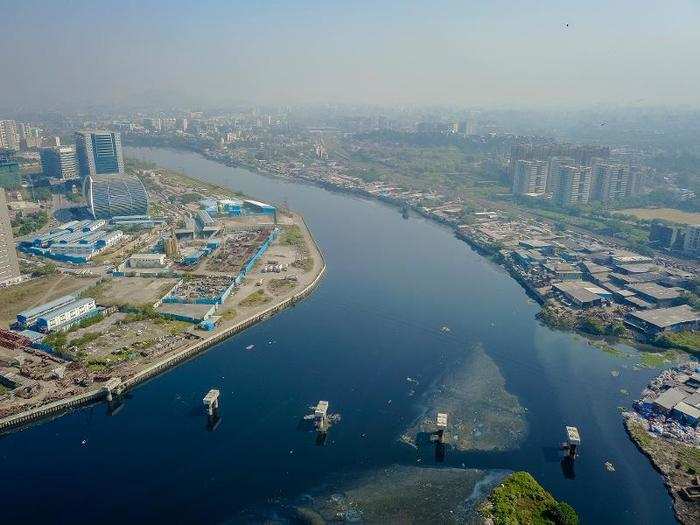
The Mithi River separates the Dharavi slum to the right and the Bandra Kurla to the left — the site of many wealthy financiers, real estate professionals, and media execs. The city is currently constructing a bridge to connect the two locations.
Though one side is more impoverished than the other, both are home to wealthy institutions.
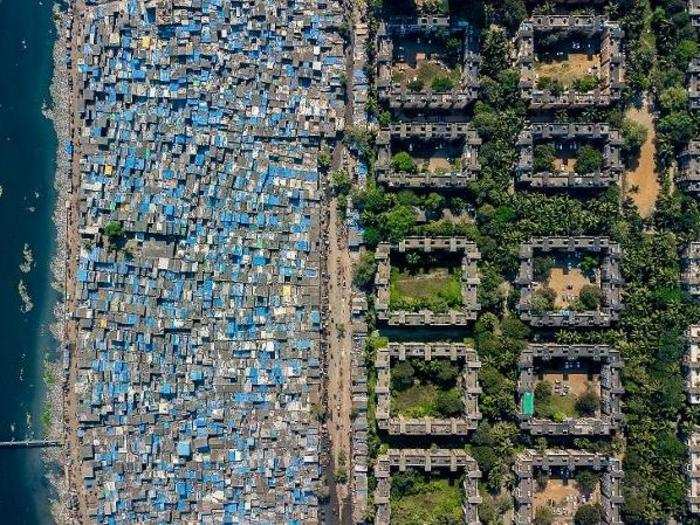
On the right, the Bandra Kurla hosts India's top energy company, the Oil and Natural Gas Corporation. But the neighboring slum is home to the Bombay Stock Exchange and the consulate generals of several countries.
The stock exchange is surrounded by dilapidated, single-story homes — a metaphorical and physical reminder of the city's inequality.
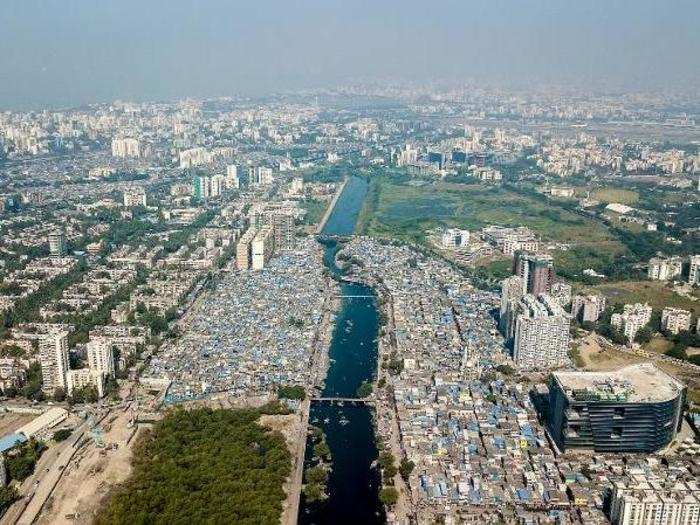
The Bombay Stock Exchange issued more than $2.2 trillion worth of shares as of March 2018.
Miller's photography shows a city in flux, straddling the line between prosperity and decay.
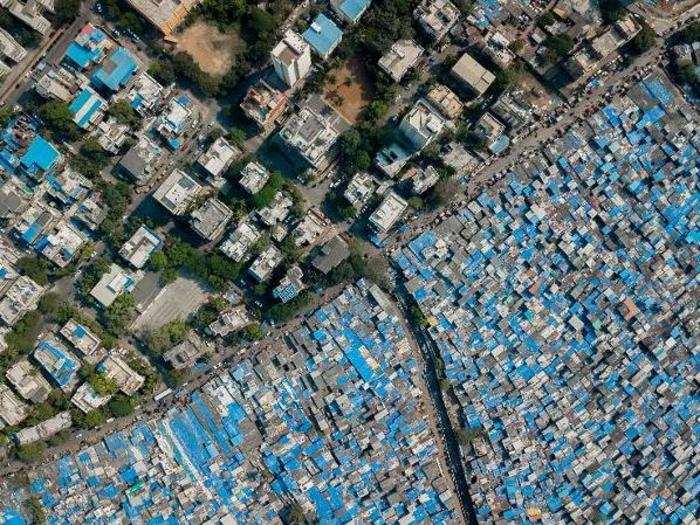
"The city is incredibly busy and huge, but not overwhelming or scary," said Miller. "Understanding the context of a place is important, and I hope that’s apparent in the aerial images."
Popular Right Now
Popular Keywords
Advertisement